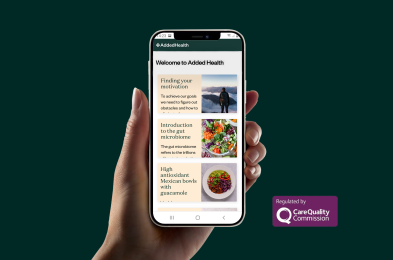
Health Inequalities
Health inequalities are defined as “unfair and avoidable differences in health across the population, and between different groups within society. These include how long people are likely to live, the health conditions they may experience and the care that is available to them.
About the challenge
To support our healthcare systems to deliver the health inequalities Long Term Plan ambitions, we are working with our ICBs to understand local plans and how innovation, including digital transformation can support these.
A key factor of health is where people live, with poorer health outcomes being closely related to higher levels of deprivation. Some ethnic groups are far more likely to live in more deprived areas than others, resulting in further inequalities. Similarly, those who are considered vulnerable may also experience greater health inequalities. Reducing health inequalities means giving everyone the same opportunities to lead a healthy life, no matter where they live or who they are.
Submit your innovation
Guidance issued by NHS England in response to the COVID-19 pandemic, set out eight urgent actions for tackling health inequalities. This was later refined to five key priority areas which underpin the work of the National Healthcare Inequalities Improvement Programme.
NHS England have also developed the Core20Plus5 strategy and approach for tackling inequalities in health care at both national and system level. The approach defines a target population cohort – the ‘Core20PLUS’ – and identifies five focus clinical areas requiring accelerated improvement.
Core20
The most deprived 20% of the national population as identified by the national Index of Multiple Deprivation (IMD). The IMD has seven domains with indicators accounting for a wide range of social determinants of health.
PLUS
Integrated Care System (ICS)-determined population groups experiencing poorer than average health access, experience and/or outcomes, but not captured in the ‘Core20’ alone. This should be based on ICS population health data.
Inclusion health groups include: ethnic minority communities, coastal communities, people with multi-morbidities, protected characteristic groups, people experiencing homelessness, drug and alcohol dependence, vulnerable migrants, Gypsy, Roma and Traveller communities, sex workers, people in contact with the justice system, victims of modern slavery and other socially excluded groups.
The five clinical areas
The final part sets out five clinical areas of focus. Governance for these areas sits with national programmes; national and regional teams coordinate local systems to achieve national aims.
- Maternity: ensuring continuity of care for 75% of women from Black, Asian and minority ethnic communities and from the most deprived groups.
- Severe mental illness (SMI): ensuring annual health checks for 60% of those living with SMI (bringing SMI in line with the success seen in learning disabilities).
- Chronic respiratory disease: a clear focus on Chronic Obstructive Pulmonary Disease (COPD) driving up uptake of COVID, flu and pneumonia vaccines to reduce infective exacerbations and emergency hospital admissions due to those exacerbations.
- Early cancer diagnosis: 75% of cases diagnosed at stage 1 or 2 by 2028.
- Hypertension case-finding: to allow for interventions to optimise blood pressure and minimise the risk of myocardial infarction and stroke.
The Core20PLUS5 approach has now been adapted to apply to children and young people. The Core20 and Plus population groups are the same as set out above.
However, for children and young people specific consideration should be taken for the inclusion of young carers, looked after children/care leavers and those in contact with the justice system.
There are five clinical areas of focus. These are part of wider actions for Integrated Care Boards and Integrated Care Partnerships to achieve system change and improve care for children and young people. Governance for these five focus areas sits with national programmes; national and regional teams coordinate local systems to achieve aims.
1. Asthma- Address over reliance on reliever medications; and
- Decrease the number of asthma attacks.
- Increase access to real-time continuous glucose monitors and insulin pumps across the most deprived quintiles and from ethnic minority backgrounds; and
- Increase proportion of those with Type 2 diabetes receiving recommended NICE care processes.
- Increase access to epilepsy specialist nurses and ensure access in the first year of care for those with a learning disability or autism.
- Tooth extractions due to decay for children admitted as inpatients in hospital, aged 10 years and under.
- Improve access rates to children and young people’s mental health services for 0-17 year olds, for certain ethnic groups, age, gender and deprivation.
How can innovation help?
Innovation targeted at health inequalities can help to transform services, how they are inclusively accessed and how they are delivered.
We are seeking to identify innovation that can support our health and care systems to narrow health inequalities. If you have something to offer, we’d like to hear about it so please email info@yhahsn.com.



